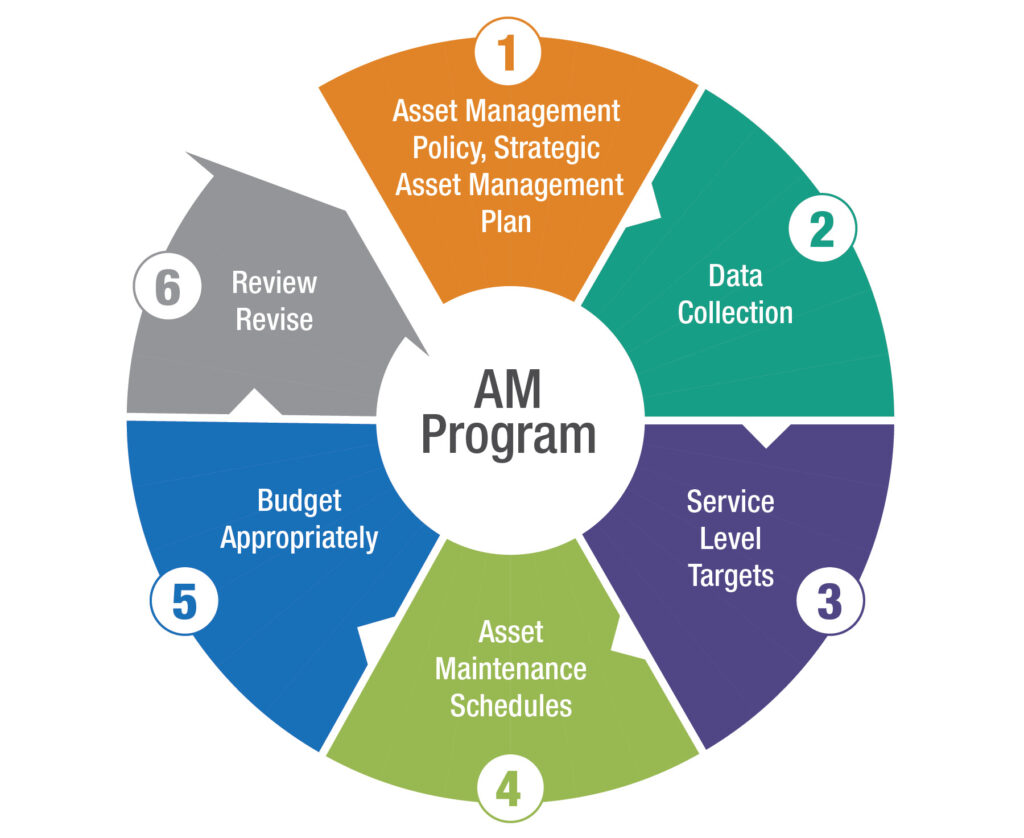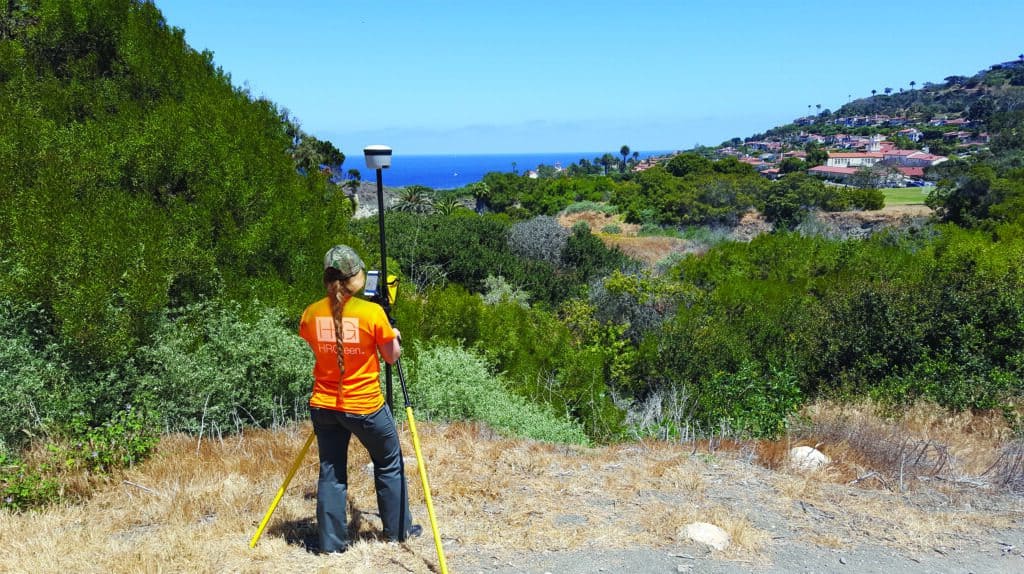
Asset Management: A Tool for Long-term Infrastructure Planning and Budgeting

If someone were to ask you about the state of your fiber, water, wastewater, or transportation infrastructure, would you be able to provide a thorough answer regarding current conditions? Could you list all the assets your agency oversees, the remaining useful life of these assets, and the risks associated with your infrastructure? If yes, you are well on your way to long-term planning with accurate budget numbers. If not, there is a highly versatile and significant tool already available to your team: Asset Management.
What is Asset Management, and Why is it Important?
Asset management is a plan that allows an agency to responsibly care for water mains, roads, bridges, equipment, and all assets involved in providing daily services to its constituents. It helps determine the necessary regular maintenance for a system to prolong its services while balancing risks associated with condition degradation and potential failures.
The value in asset management lies in its ability to be utilized instantly with the resources available on hand. In short, asset management helps provide the greatest return on investment while maintaining services. It provides answers to the following questions (and many more) about your infrastructure:
- What does the agency own, and what are they responsible for?
- What is each component’s current condition?
- What is the remaining useful life of the system?
- What is the total life cost?
- What are the system’s associated risks?· What service is expected by the agency’s constituents?
Starting an Asset Management Program
The major components required for an asset management program are an Asset Management Policy, Strategic Asset Management Plan, Data Collection, Service Level Targets, Asset Maintenance Schedules, and Budget. There is some flexibility in these components, allowing your agency to track assets now and scale as your needs grow, ultimately creating a comprehensive plan over time.
1. Asset Management Policy, Strategic Asset Management Plan
The Asset Management Policy and Strategic Asset Management Plan (SAMP) are the core documents to your Asset Management Program. The policy outlines your agency’s approach to asset management and how that falls under the agency’s current plans and objectives. This is a guideline for your asset management goals while keeping your agency compliant with local, state, and federal requirements. Upper management must review and approve it as the policy will help justify your future investment decisions.

The Strategic Asset Management Plan is where you take that vision for asset management and develop several specific and succinct goals or objectives for your agency. Combined with your long-term plan for your team, these will help set the goals for the following steps as you begin your journey.
2. Data Collection
Without knowing what you own, you will not be able to create a tailored Asset Management Program that meets your agency’s needs. Often the most time-extensive component, data collection is a critical step in compiling an agency’s inventory. In this step, the agency consolidates all information available to answer the following:
- What does an agency own?
- How much do they own?
- Where is it located?
- What was it installed/replaced?
- What condition is it in?
- What is its remaining useful life?
If any questions cannot be answered, there is a data gap in your inventory that requires attention. Gaps should be resolved quickly and prioritized based on the value of the information, such as age or material type. If an agency’s full-time staff does not have the time to address this gap, consider using seasonal staff, interns, or hiring a consultant to complete the inventory.

3. Service Level Targets
At this point, you want to establish your service level targets for your constituents. Before you do so, you must define your stakeholders as they expand beyond those you provide services to. It also includes your Board, critical staff in the municipalities your services reach, regulators, and your staff directly in charge of running these daily activities.
The next steps include understanding what those stakeholders require and what they expect from you and your services. You may be surprised to discover that you’ve been regularly scheduling testing of your water samples once a month, when regulations may have changed to require testing weekly as the new standard.
When determining optimal service levels for your agency, it is important to balance the risk of asset failure, the asset’s cost, and the asset’s performance. While you can occasionally adjust one of these categories, the other two will increase or decrease accordingly and may need to be monitored for safety and quality purposes.
4. Asset Maintenance Schedules
Subsequently, you may set up reasonable, asset-appropriate preventative maintenance (PM) schedules. PM schedules are essential to elongate the useful lives of an asset as routine repairs are conducted to improve the asset’s condition. They are also a great proactive tool as they require staff to inspect the asset, giving the opportunity to notice any new and noteworthy malfunctions/defects to the asset.
There are various methods to track these necessary schedules for all your assets, ranging from spreadsheets to asset management software like Cartegraph, Cityworks, Brightly, AssetWorks, and/or VUEWorks to name a few. Depending on how many assets your agency has, you may want to consider software as a potential solution. With technological advances and various software options, different packages are available for various budgets. While spreadsheets can keep track of upcoming PM, software can notify the correct individual of an upcoming PM task. In addition, the software can readily track how much money you’ve spent on PMs compared to repairs to help identify costly assets needing replacement.
5. Budget Appropriately
In this step of the asset management process, data drives the decisions on prioritizing the project list. Your Asset Management Policy and Plan have laid the groundwork for the direction your agency is heading towards, while your inventory, service level targets, and PM schedules dictate what you need to do to get there. Combining all this information allows you to focus on projects that are the most critical services for your community.
Your Asset Management Program is also designed to be another tool to use during Capital Improvement Planning. Based on previous history, it lays the groundwork for anticipated costs, providing a realistic estimate to include in your budget. Should an emergency occur or need change, your plan can pivot to account for this while maintaining focus on priorities for your agency.

6. Review and Revise
The Asset Management Program is a cyclical process that should be reviewed and revised on an annual basis, at a minimum. This is essential to your process because goals for the agency may have shifted over the last year due to a change in personnel, budgets, leadership, goals, standards, and funding requirements.
This yearly check-in also provides an opportunity to verify that current practices are not straining staff schedules and that asset conditions are beginning to improve. You can also identify if data gaps are being filled, examine the priority of those gaps, and adjust schedules if necessary.
Time to Start
While an Asset Management Program is a multi-year project, the investment in time and effort will help your agency make the most responsible decision for your infrastructure. Doing so verifies your services are being provided at the lowest cost to you and assets are reaching their intended useful lives. HR Green is here to help you as you start your asset management program, no matter how big or small your resources allow. Contact us today to discuss your assets and develop your scalable program.
Subscribe to HR Green Insights
We're dedicated to providing up-to-date knowledge and insights about the topics that matter most to you. We know how busy you are, so we will keep this simple, covering just one topic per email. Once you've subscribed, you can easily customize your preferences to receive only the updates relevant to you.





